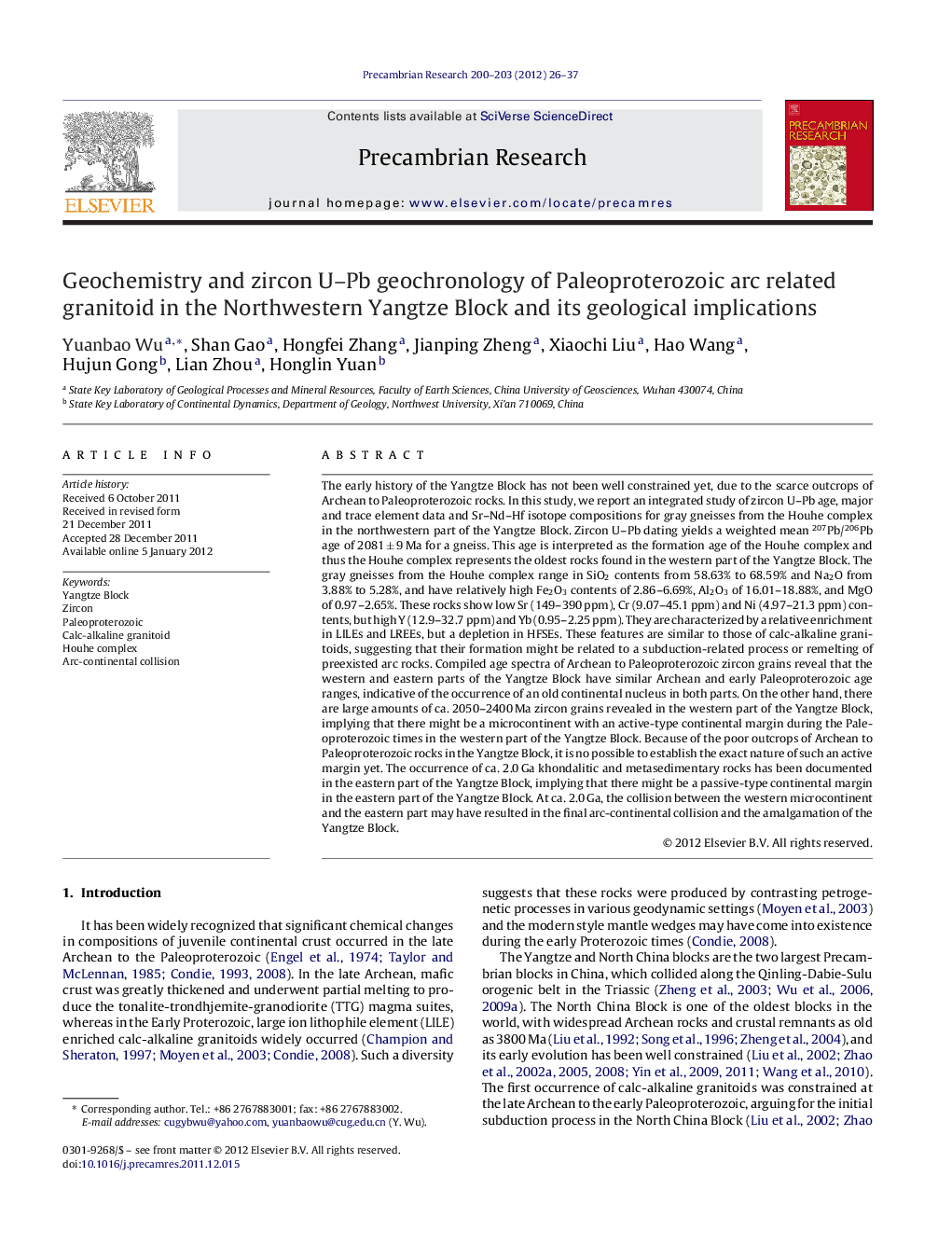| کد مقاله | کد نشریه | سال انتشار | مقاله انگلیسی | نسخه تمام متن |
|---|---|---|---|---|
| 4723579 | 1639659 | 2012 | 12 صفحه PDF | دانلود رایگان |

The early history of the Yangtze Block has not been well constrained yet, due to the scarce outcrops of Archean to Paleoproterozoic rocks. In this study, we report an integrated study of zircon U–Pb age, major and trace element data and Sr–Nd–Hf isotope compositions for gray gneisses from the Houhe complex in the northwestern part of the Yangtze Block. Zircon U–Pb dating yields a weighted mean 207Pb/206Pb age of 2081 ± 9 Ma for a gneiss. This age is interpreted as the formation age of the Houhe complex and thus the Houhe complex represents the oldest rocks found in the western part of the Yangtze Block. The gray gneisses from the Houhe complex range in SiO2 contents from 58.63% to 68.59% and Na2O from 3.88% to 5.28%, and have relatively high Fe2O3 contents of 2.86–6.69%, Al2O3 of 16.01–18.88%, and MgO of 0.97–2.65%. These rocks show low Sr (149–390 ppm), Cr (9.07–45.1 ppm) and Ni (4.97–21.3 ppm) contents, but high Y (12.9–32.7 ppm) and Yb (0.95–2.25 ppm). They are characterized by a relative enrichment in LILEs and LREEs, but a depletion in HFSEs. These features are similar to those of calc-alkaline granitoids, suggesting that their formation might be related to a subduction-related process or remelting of preexisted arc rocks. Compiled age spectra of Archean to Paleoproterozoic zircon grains reveal that the western and eastern parts of the Yangtze Block have similar Archean and early Paleoproterozoic age ranges, indicative of the occurrence of an old continental nucleus in both parts. On the other hand, there are large amounts of ca. 2050–2400 Ma zircon grains revealed in the western part of the Yangtze Block, implying that there might be a microcontinent with an active-type continental margin during the Paleoproterozoic times in the western part of the Yangtze Block. Because of the poor outcrops of Archean to Paleoproterozoic rocks in the Yangtze Block, it is no possible to establish the exact nature of such an active margin yet. The occurrence of ca. 2.0 Ga khondalitic and metasedimentary rocks has been documented in the eastern part of the Yangtze Block, implying that there might be a passive-type continental margin in the eastern part of the Yangtze Block. At ca. 2.0 Ga, the collision between the western microcontinent and the eastern part may have resulted in the final arc-continental collision and the amalgamation of the Yangtze Block.
► The 2080 Ma granite is the oldest arc rocks in the western Yangtze Block.
► A passive and an active-type margin in both parts of the Yangtze Block.
► The ca. 2.0 Ga collision resulted in the arc-continental collision orogeny.
Journal: Precambrian Research - Volumes 200–203, April 2012, Pages 26–37